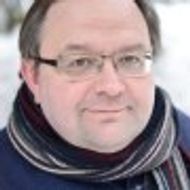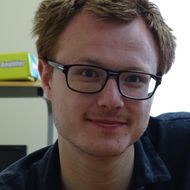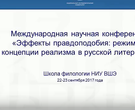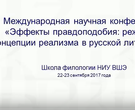- A
- A
- A
- АБB
- АБB
- АБB
- А
- А
- А
- А
- А
- Национальный исследовательский университет «Высшая школа экономики»
- Факультет гуманитарных наук
- Школа филологических наук
- Practice and philosophy of language typology. Лекции Мартина Хаспельмата.
-
Школа
- О школе
- Сотрудники
- Образовательная деятельность
- Научные семинары школы
- Аспирантская школа по филологическим наукам
- Майнор "Инструменты эффективной коммуникации"
-
Проекты школы
-
- Летопись жизни и творчества Б.Л. Пастернака
- Большой проект «Русская литература в социальном измерении: компьютерная платформа СОЦИОЛИТ»
- Всеволод Некрасов. Литературный архив
- Большой проект «Речевые практики»
- Трансформация коммуникативной модели в эго-текстах русского модернизма
- Сравнительное изучение метрического стихосложения на фоне языковой просодии: цифровая аналитическая платформа “Прозиметрон”
-
- Майнор "История литературы"
-
Подразделения
- Лаборатории
- Научно-учебные группы
- Мандельштамовский центр
Адрес: 105066, г. Москва,
Старая Басманная ул., д. 21/4
 Неведомый мир: забытые рассказы и повести о крестьянах (1791-1861). Антология
Неведомый мир: забытые рассказы и повести о крестьянах (1791-1861). Антология
М.: Объединенное гуманитарное издательство Ruthenia.ru, 2025.
Новое литературное обозрение. 2025. № 194. С. 422-436.
В кн.: Древние свидетельства об апостоле Андрее Первозванном. Агиографические тексты 1-го тысячелетия по Р.Х.. М.: Издательский дом "Лингва-Ф", 2025. С. 197-226.
Practice and philosophy of language typology. Лекции Мартина Хаспельмата.
Курс лекций 15, 16, 18, 19 октября 2012 г.
Lecture 1. Cross-linguistic grammatical databases
This lecture will discuss various ways in which cross-linguistic databases with world-wide scope have been collected and published over the last decades. It provides an introduction to the World Atlas of Language Structures (2005/2008) and discusses some of its limitations, and it gives an overview of a number of more recent and ongoing projects, especially the Atlas of Pidgin and Creole Language Structures, the World Loanword Database, and the Leipzig Valency Database. This lecture will thus focus on the practice of language typology, but some philosophical questions will be raised right away.
Lecture 2. Semantic maps and comparative concepts
Since language forms vary widely across languages, lexical and grammatical comparison must be based on shared meaning. Languages differ from one another often in the range of functions of a given form, for example the Russian Dative case typically corresponds to the English preposition to, but it may also correspond to for, and English to may correspond to the Russian preposition v. Such polysemy patterns can be summarized by semantic maps, which imply universals of coexpression. But do the underlying semantic maps give us direct insight into the human mind? This seems to optimistic, and semantic maps should rather be seen primarily as tools for comparing languages.
Lecture 3. Linguistics without words and without morphology
This lecture asks whether “word” is a useful comparative concept for world-wide language comparison. This is often assumed without argument, but attempts at actually defining “word” in such a way that the concept can be used across languages have not been successful. Here we examine a dozen criteria for defining wordhood, and we find that none of them gives us necessary and sufficient conditions for a language-independent “word” notion. The consequence is that we should not use the terms “word” and “morphology” in a cross-linguistic sense, though there may well be ways of defining “word” for particular languages.
Lecture 4. Form-frequency correspondences in grammar
It has long been known that more frequent words tend to be shorter than rarer words, but in grammar, too, we find pervasive frequency effects. Some of these can be seen when looking at individual languages, but they are revealed most powerfully when a cross-linguistic perspective is adopted: Many universal generalizations in grammar find an explanation in usage frequency. How language structure is shaped by usage frequency is not an easy question to answer, but the explanatory power of the theory is so great that a mechanism can safely be assumed to exist. We will in fact discuss several plausible mechanisms of the required kind.
Lecture 5. How to compare word-classes cross-linguistically
Linguists often say that languages differ with respect to the word-class categories that they have: For instance, we read that Mandarin Chinese has no adjectives, that Tagalog has no verbs, that Japanese has two adjective classes, or that Chamorro makes no distinction between intransitive verbs, nouns, and adjectives. But this presupposes that languages use linguists’ categories as universal building blocks – as if our categories were the DNA of grammars. The reality is much more banal: We inherited our categories from our ancestors, and are struggling to extend them from one language to another. In this lecture, I will show that universals and differences between languages must be expressed in more sophisticated ways than by simply stating the preence or absence of a category in some language.
- О ВЫШКЕ
- Цифры и факты
- Руководство и структура
- Устойчивое развитие в НИУ ВШЭ
- Преподаватели и сотрудники
- Корпуса и общежития
- Закупки
- Обращения граждан в НИУ ВШЭ
- Фонд целевого капитала
- Противодействие коррупции
- Сведения о доходах, расходах, об имуществе и обязательствах имущественного характера
- Сведения об образовательной организации
- Людям с ограниченными возможностями здоровья
- Единая платежная страница
- Работа в Вышке
- ОБРАЗОВАНИЕ
- Лицей
- Довузовская подготовка
- Олимпиады
- Прием в бакалавриат
- Вышка+
- Прием в магистратуру
- Аспирантура
- Дополнительное образование
- Центр развития карьеры
- Бизнес-инкубатор ВШЭ
- Образовательные партнерства
- Обратная связь и взаимодействие с получателями услуг
-
http://www.minobrnauki.gov.ru/
Министерство науки и высшего образования РФ
-
https://edu.gov.ru/
Министерство просвещения РФ
-
http://www.edu.ru
Федеральный портал «Российское образование»
-
https://elearning.hse.ru/mooc
Массовые открытые онлайн-курсы
- © НИУ ВШЭ 1993–2026 Адреса и контакты Условия использования материалов Политика конфиденциальности Карта сайта
- Редактору





